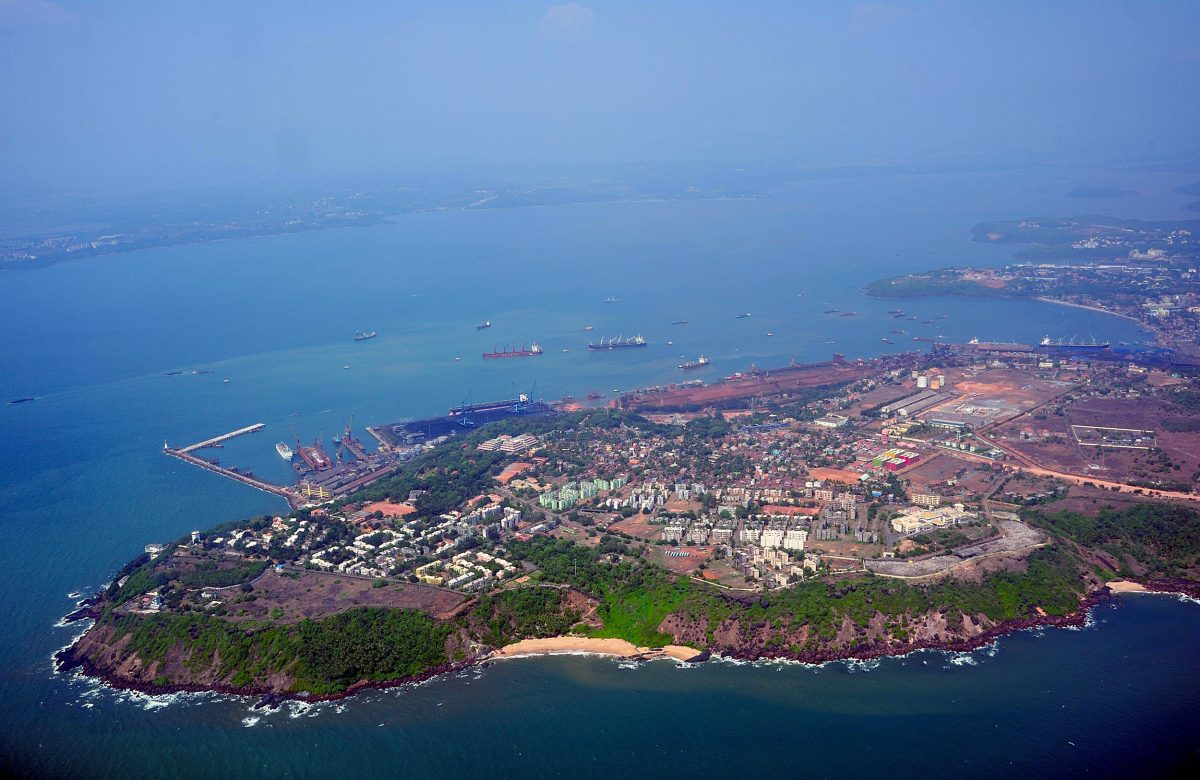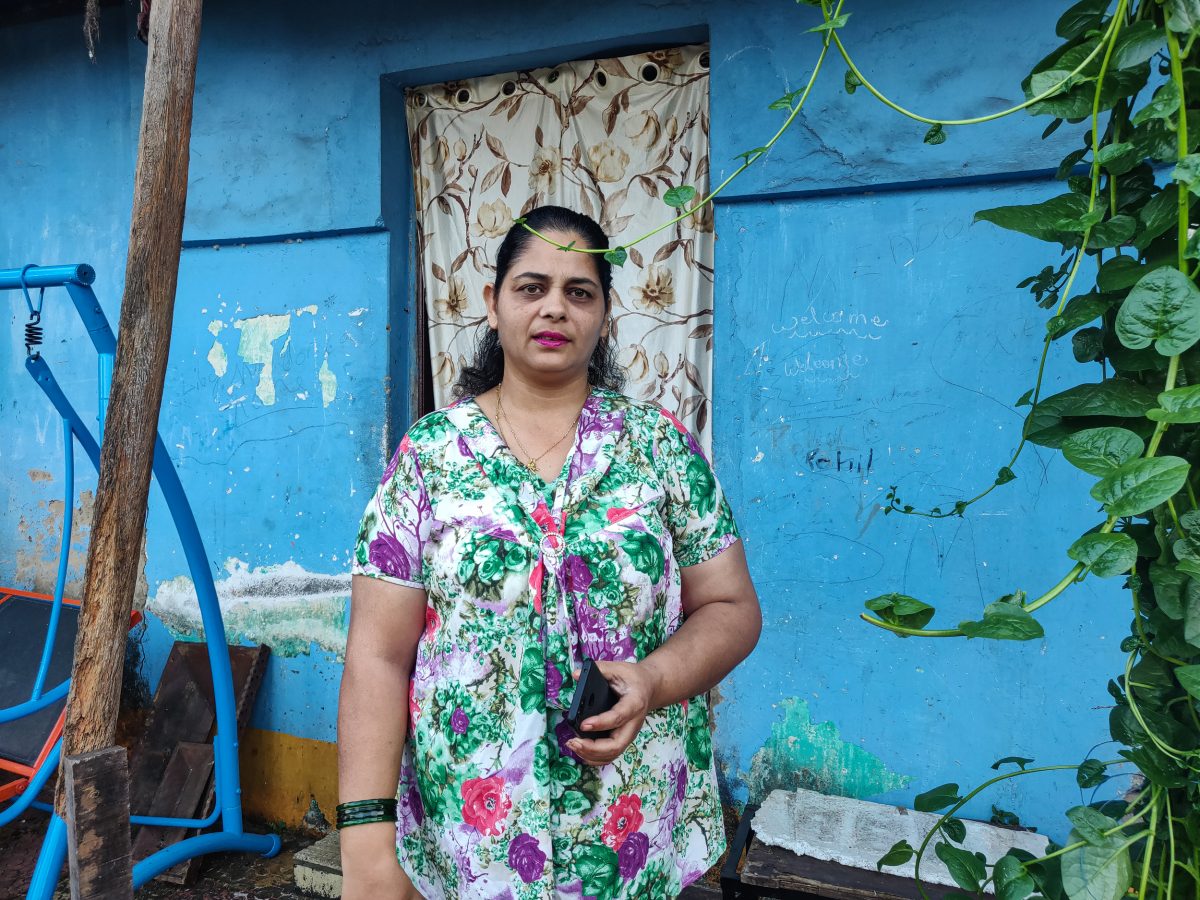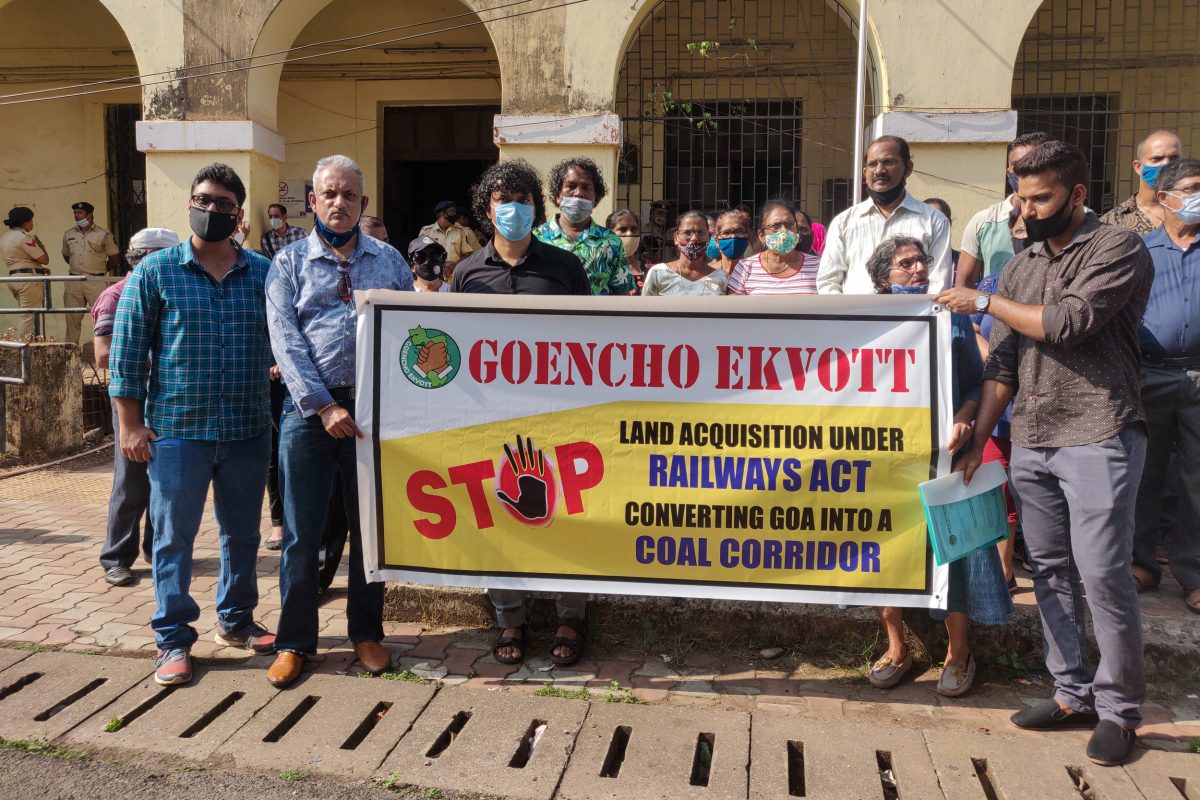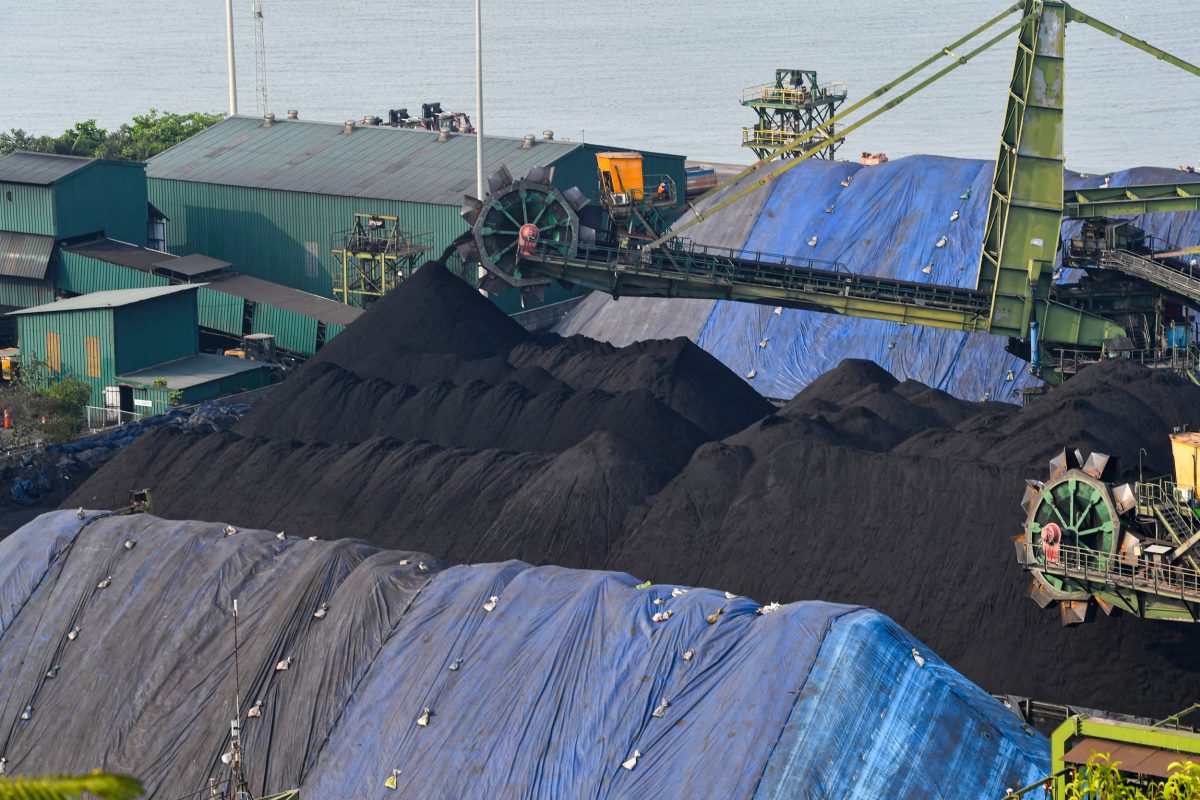In Goa, the Water Runs Black
Locals near one of India’s coal-importing ports feel the effects of coal dust and are bracing for an even unhealthier future.
Article body copy
This story was produced in partnership with the Pulitzer Center.
In February this year, there were unseasonal rain showers in Vāsco Da Gāma, a port town along India’s western coastline, in its smallest state, Goa. When that water fell off Liby Mendonca’s sloping roof and collected on her porch, it was black.
To Mendonca this wasn’t a surprise but a reminder of the constant presence of coal dust in her life. Her home is a few hundred meters from the Mormugao Port Trust, which receives coal from mines in Australia and South Africa. Subsidiaries of three private Indian companies, JSW Group, Vedanta Limited, and Adani Group, with diverse and global business portfolios ranging from coal mines to real estate, lease berths at the government-owned port to import this coal.
While Goa is a tourist favorite for its sun and sandy beaches, Vāsco, as the locals call it, has little to offer. The dusty town has more concrete structures than scenic beauty, a contrast to the aesthetic Portuguese architecture and greenery that dominate the rest of the state. Impoverished fishing villages and low-income housing line the coast. The area also has slums where migrant workers live in cramped and unhygienic conditions.

Mormugao Port Trust, adjacent to the town of Vāsco Da Gāma in Goa, India, imports coal and coal byproducts like coke, among other supplies. Photo by Joao Ponces/Alamy Stock Photo
Much of the economic activity in Vāsco has been centered on the port for decades. It was commissioned in the late 1880s, and in its early days was “a sleepy port importing table wines from Portugal and exporting oil cakes from Hubli,” as the port’s website puts it. It is now one of India’s 12 major ports and primarily exports iron, granite, and steel, and mostly imports coal and coal byproducts like coke. In 2019–20, the port received 9.56 million tonnes of coal, roughly 3.8 percent of the country’s total.
Apart from a few trees, there is little shielding Mendonca’s nearly 100-year-old modest ancestral home from the coal dust that flies in all directions from the port. The dark and glistening particles are everywhere. They are on the windshields of the cars parked out in the open, on the windowpanes of homes, and on furniture that needs cleaning multiple times a day. Food has to be covered so the dust doesn’t settle on it. The air tastes dusty and smells acrid, even inside Mendonca’s house.
She’s also bothered by the constant rumbling of cranes lifting coal off cargo ships and dumping it on land. The noise continues all through the day and night. “The second the noise stops, I feel, aha, what a relief!”

Liby Mendonca, who lives near Mormugao port, says she has to mop the floor of her house twice a day because of coal dust. Photo by Disha Shetty
Locals cope by keeping doors and windows shut. Despite that, their eyes water and throats itch, and respiratory infections are a constant problem.
Ravindra Parulekar, a general practitioner who runs a nursing home in Vāsco, confirmed there are widespread respiratory cases in the area, including a rise in respiratory issues among young children. In private conversations, other doctors say the same, and even point to rising cancer cases in Vāsco, but in India’s current punitive political climate, they won’t speak publicly out of fear of retribution.
Now locals are bracing for an unhealthier future. A 2016 report by India’s Ministry of Shipping indicates that the amount of coal and coke could more than double—possibly even quadruple—by 2035, destined for thermal plants and steel factories in nearby states.
And other changes to the region surrounding them are coming. The port’s relatively small size is already a bottleneck. Ships must wait in line while the coal is unloaded with cranes. The port has limited storage capacity, which means this polluting coal, handled in the open, has to be shuttled into the country quickly after it arrives, so more of it can be accepted. On April 7, 2020, during India’s 21-day COVID-19 lockdown, the environment ministry green-lighted multiple infrastructure projects across 11 states, including two that will help keep coal tumbling into Goa. A road is set to be widened and a railway track will be doubled—both cut through Mollem National Park and the surrounding Bhagwan Mahavir Wildlife Sanctuary, a protected area roughly 45 kilometers to the east of Vāsco in the mountains of the Western Ghats. The areas ought to have been inviolable by India’s own laws. The Western Ghats, older than the Himalayas, are a UNESCO World Heritage Site and support endemic plants and animals.
The meetings where these clearances were given were held over videoconferencing and moved rapidly, leaving little opportunity for members of the public to raise objections.
All of this comes at a time when the country should be transitioning away from coal. In 2020, India was the world’s third-largest emitter of carbon. Weaning away from coal is critical to reducing global carbon emissions and averting the worst-case scenario of climate change.
Energy economist Vibhuti Garg of the US-based Institute for Energy Economics and Financial Analysis says India does not need more coal for its existing or future domestic power consumption. She also points out that the cost of coal energy is higher per megawatt hour than renewable energy sources, such as solar and wind energy.
Why then does India need more coal? Coal can be divided into two categories: thermal, used for power generation, and metallurgic, which provides the carbon necessary for producing steel, an alloy that primarily consists of iron. It could be that steel manufacturers are driving the demand. The private entities that import coal may be using it in other branches of their own businesses, says Garg. “If someone is able to lower their cost of production and use their own coal, then it would make more sense for them.”
JSW, Adani, and Vedanta all operate power or steel plants in India. JSW claims to be India’s largest steel exporter, supplying more than 100 countries on five continents, and owns the majority stake in a South African company that operates domestic coal mines. Adani owns coal mines in Australia and Indonesia.
The official line is that the coal is needed for development and for the growth of industries, but the government is scant on specifics. The state government in power in Goa is Prime Minister Narendra Modi’s party, the Bharatiya Janata Party. This stand on coal domestically is in sharp contrast with Modi’s global image as a protector of the environment, which won him a United Nations Champions of the Earth Award for Policy Leadership three years back.
“The government’s role right now is that of a facilitator of private profits at the cost of national resources,” says Abhijeet Prabhudesai, co-convener of the protest group Goyant Kollso Naka (We Don’t Want Coal in Goa). “It doesn’t seem to be even slightly inclined to fighting climate change.” He alleges that developed countries do not want to burn coal at home, though they eagerly import steel transformed from iron ore by burning coal in other countries including India, and the government enables it. “Our resources are going and we are left with the pollution and destruction,” he says.
Adani currently operates ports across six states in India, including Goa. Founder and chairman Gautam Adani’s personal net worth in 2016 was US $3.5-billion and today has bloomed to around $60-billion, according to a real-time estimate by Forbes. India’s opposition leaders have accused him of being a key funder of Modi’s election campaigns and allege the government is catering to private interests. Given the lack of transparency around funding to political parties in India, this claim is hard to independently verify.

Gautam Adani runs one of the companies set to benefit from rising coal imports in Goa. Photo by Amit Dave/Reuters/Alamy Stock Photo
The state government’s argument that coal is essential for Goa’s development is also not one that Gabriel Coutinho, parish priest at Vāsco’s Saint Andrew’s Church, buys. He says he often meets people with lung diseases and breathing issues during his visits to homes across Vāsco. And despite the continuous coal imports, he hasn’t seen any positive markers of development in the place over the past two decades. He questions the wisdom of development that doesn’t factor in the cost of deteriorating public health.
When news broke during lockdown about the road widening and railway track expansion, locals were infuriated, believing the government was trying to sneak approval of controversial projects meant to aid the movement of coal out of the state past the public and hack apart a biodiversity hotspot in the process. A new power transmission line that will also cut through Mollem National Park and Bhagwan Mahavir Wildlife Sanctuary was already approved—critics suspect it will eventually power new steel factories in Goa so that the coal doesn’t have to be taken as far.
Within weeks, despite the pandemic, Save Mollem protests erupted online and then in person soon after. For several months, until the escalating COVID-19 crisis drove them away, thousands of protesters held candles, blocked railway lines, shouted slogans, and broke into flash mobs in front of government offices in Panaji, the state capital, about 45 minutes from Vāsco. They used the uprising to argue against the use of coal, but also to air other concerns about development, including the impact on biodiversity and the risk to heritage structures, which might collapse or need to be dismantled for road and railway construction. In a media interview, the minister of Goa’s Department of Environment and Climate Change responded by claiming the projects are actually intended to improve travel, and denied there’s any connection to coal.

Locals in Goa have been protesting for years against the increasing imports of coal—their efforts escalated after the central government approved new infrastructure projects in 2020. Here, a group focused on the railway expansion protests in Vāsco Da Gāma in February 2021. Photo by Disha Shetty
In Vāsco, locals are concerned that the infrastructure projects will mean more coal passing through their town and increased air pollution. They worry for the health of the children and the elderly. Although no one has studied the direct health impacts of coal dust on the community, there is adequate reason for this worry.
Epidemiologist Marianthi-Anna Kioumourtzoglou of Columbia University’s Mailman School of Public Health in New York explains in an email that coal contains sulfur and heavy metals, which have been linked to cardiovascular diseases and other adverse health conditions. “Depending on how fine the dust is, it could deposit at different parts of the respiratory tract,” she says—the finer the particles, the deeper they can travel into someone’s body. A recent study funded by the port itself concluded that coal dust particles from the port do reach Vāsco; wind speed and the amount of moisture in the air determine how they’re dispersed.
While respiratory illness will be the immediate problem, environmental medicine expert Ramana Dhara, who is a professor at the Indian Institute of Public Health, expects there will also be an increase in cases of eye, lung, and skin irritation: “There is also always a risk of lung cancer with coal pollution, but it takes years, if not decades, to manifest.” He adds the risk is highest for children, as their systems are most sensitive to pollution and they have longer to live.
Others living in Vāsco say the constant rumbling of the motors gives them a headache and anxiety, and they expect these issues to become more intense.
The health concerns extend beyond Vāsco. As coal moves out of the state through the forests of the Western Ghats, coal dust and coal chunks are left behind on the roads and railway lines. “When it rains, the coal dust mixes with rainwater and ends up in our rivers,” says Sandeep Parker, who owns a small grocery shop along the highway, close to the forests of Mollem.

Chunks of fallen coal can be found along the highway that cuts through a protected area. The highway is expected to be widened, which locals fear will undermine biodiversity and their own health. Photo by Disha Shetty
Stakeholders like some politicians and those involved in the transport of coal are known to be vindictive against people who speak out. Goans share stories about receiving bribes or threats of bodily harm for speaking to the media or police. Journalists writing critically about powerful companies are known to be sued.
When asked if she is scared, Mendonca laughs mockingly. Her home is covered in dust and her two sons face respiratory issues. There isn’t much left to lose, she says.
The government has marched ahead with the projects. Thousands of trees in Mollem have been marked for chopping and a forest clearance has been approved, signaling the government’s intention to continue with the plans.
This story of development in Goa is a familiar one for many other states across India. Since July 2014, India has approved over 270 projects in and around its most protected environments, including biodiversity hotspots and national parks, according to an analysis by IndiaSpend. Communities that object are often accused of being opposed to economic growth.
Law student and Vāsco resident Sherwyn Correia visits fishing families near the port to document their health conditions. “The kids, small babies, they roll on the floor and are covered in black dust,” he says. “What’s their future?” He is among those who filed a case in 2018 with Goa’s top court against the open handling of coal at Mormugao port, but it remains in limbo.
A job at Mormugao Port Trust was once coveted. It came with perks like accommodation, says Jayesh Shetgaonkar, a Vāsco resident and activist, pointing to now rundown-looking residential buildings near the port. Over the years, as pollution levels rose, many new contractual port labor jobs fell to those with few other options. Locals say that the rich Vāsco residents began to leave; the poor had nowhere else to go. Gesturing to the clear water of the Arabian Sea, Shetgaonkar notes that most Goans make money from tourism, not coal. “Tourists come to Goa for the peace and quiet here as well as to enjoy the natural beauty,” he says. As the coal threatens to destroy both, he hopes the government will rethink its strategy and focus on improving tourism-related jobs instead. Tourism can bring its own set of problems, but lungs full of coal dust is rarely among them.


